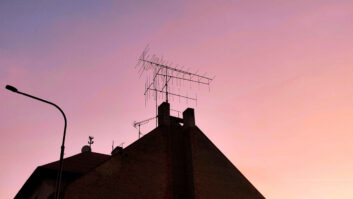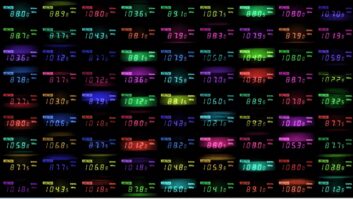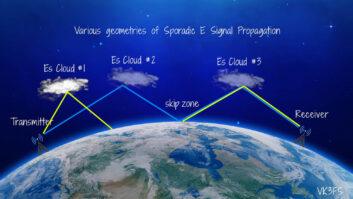Proponents of a power increase for LPFM stations in the United States can point to hundreds of comments in favor of raising the maximum power level for many stations to 250 watts. But the National Association of Broadcasters continues to express strong opposition.
The Federal Communications Commission is considering a proposal from REC Networks that would amend Parts 73 and 74 of the rules to create an LP-250 class of service with an effective service contour of about 4-1/2 miles. This would be in addition to the current LP-100 service. The proposal also would set a maximum HAAT for new or modified LP-100 facilities of about 1,480 feet.
The commission modified its low-power FM rules in 2020 to allow for engineering improvements that improved reception of some LPFMs and opened up options for station relocation. At that time it rejected a bid to allow 250 watts, and a recent FCC decision affirmed the actions in that order.
REC Networks in the meantime submitted a fresh proposal that it believes resolves the FCC’s earlier concerns. Comments on that were due yesterday, and the vast majority favor an increase, citing the benefit to local communities.
However, NAB urged the commission to reject the petition, saying it is similar to petitions that have already been rejected on technical and policy grounds. It says the proposal would risk significant overcrowding of the already congested FM band, cause increased interference with other services and take LPFM beyond its original intention as a hyperlocal service.
Passionate support
The support for REC’s “Simple LP250” among grassroots advocates revealed the passion of some LPFM listeners and station operators.
“In Chicago, WLPN(LP) has been on the vanguard, with 24 hours of programming in multiple languages, with a focus on serving the historically underserved members of the community,” wrote radio listener Keefer Dunn. “Allowing a station like WLPN to increase its signal strength would allow it to reach more Chicagoans on the South and West sides, two areas of historic underinvestment.”
The proposal is supported by WQFB(LP) in Flagler Beach, Fla. “With an increase in power WQFB has an opportunity to obtain additional underwriters and listeners … to assist with the funding needed for equipment upgrade and additional programming and staff,” the station wrote.
Wayne Johnson, station manager for WGPG(LP) in Battle Creek, Mich., told the FCC the station would be thankful for any power increase to enable it to increase coverage area.
“Our signal strength is very weak, causing a lot of static in the main business district on the south side of town. This discourages our listeners from continually listening to our broadcast as they travel through town. We are a religious station and we believe that we are providing unique programming to the Battle Creek residents. It would really help our effectiveness if the maximum wattage output was raised from 100 to 250 watts,” Johnson wrote.
KFXY(LP), licensed to Mesa, Ariz., commented: “KFXY supports this small increase in power as it would help our station and many others with getting our signal into buildings in our 60 dB and fighting off interference from distant stations.”
Even the mayor of Monona, Wis., wrote on behalf of WVMO(LP), which is licensed to her city: “WVMO went on the air in August of 2015. Since that time the radio station has become a tremendous asset to Monona and the east side of Madison, Wis. Our little station has provided hyperlocal programming,” wrote Mary O’Connor.
O’Connor hosts a weekly interview segment on the station called “Monona Lowdown” in which she answers citizen’s questions and updates the community on the latest happenings.
Opposition
NAB based part of its opposition to LP-250 on the potential of overcrowding a congested FM band.
“Moreover, (a power boost) is simply unnecessary. The FCC has already bent over backwards to improve LPFM service coverage by permitting the use of translators, boosters and other measures,” it wrote.
“Essentially, LPFM advocates are asking that LPFM stations be permitted to enjoy the same (or even greater) coverage as full-service Part 73 FM stations, but without the same public interest and regulatory obligations. Such an obvious end-run around the commission’s rules would set a dangerous precedent.”
NAB continued: “The petition still fails to justify a total overhaul of LPFM service. FM broadcasters report that too many LPFM stations already transmit at higher than authorized power or from an unauthorized location, cause frequent interference and hinder translator service, among other problems, under the current 100-watt regime. Allowing LPFMs to substantially increase their power would unnecessarily exacerbate these harms.”
If REC’s proposal is ultimately approved, NAB asks that the FCC create a system for ensuring technical compliance by LPFM stations.
NAB said it understands “that authorizing LP-250 service would allow some LPFM stations to slightly expand the reach of the few LPFM stations that actually provide meaningful local content,” but on balance, “it is far more important to preserve reliable access to the news and information provided by incumbent radio broadcasters.”
The FCC, which has indicated another filing window for new entrant LPFM construction permits is on the horizon, says there is no reply comment period for this petition.







